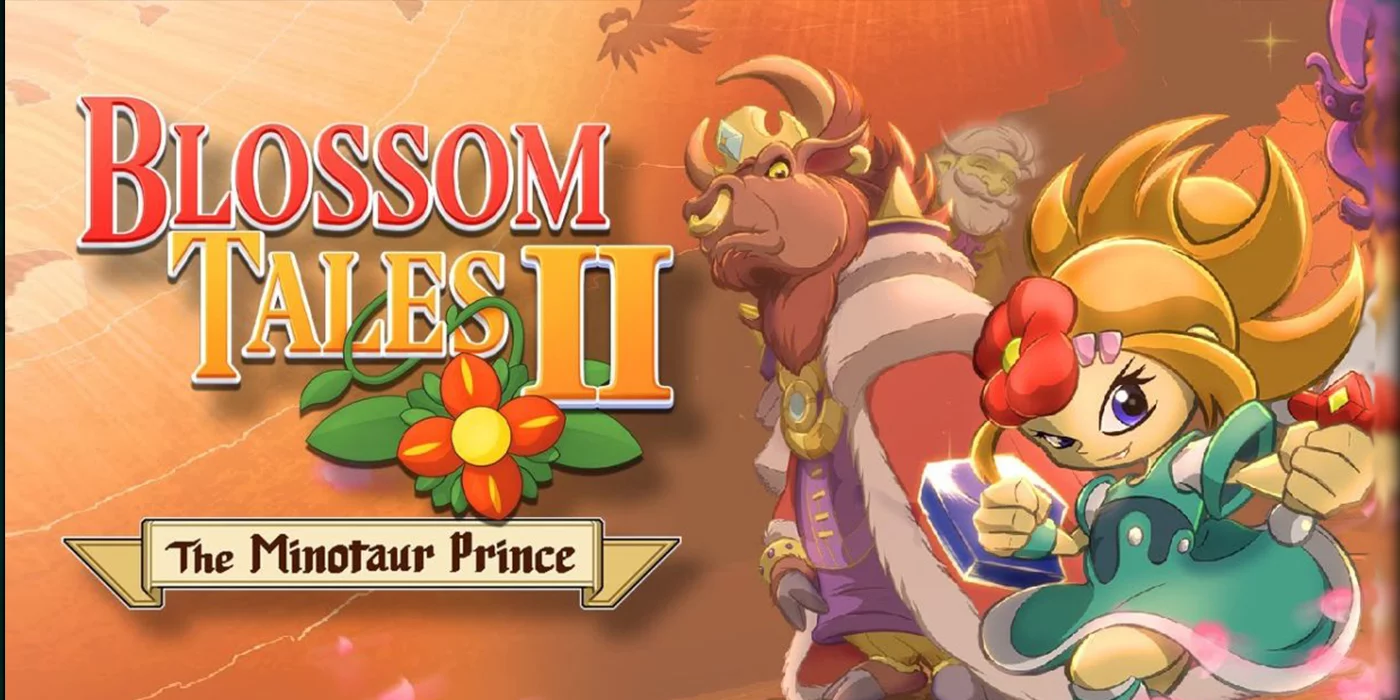Blossom Tales 2: The Minotaur Prince, is the second game in the series released by Playtonic Games. After having enjoyed the first game, I was happy to see that a second game was in development and eagerly anticipated its release. Having, as I do, a love for a well made top-down adventure game (read: “yeah I do love 80’s/90’s Zelda), I was hoping that Playtonic Games had created another fun escapade for me to experience.
At A Glance
| Scores | |
| Visuals | 7.5 /10 |
| Sound | 7.5 /10 |
| Gameplay | 8 /10 |
| Overall | 7/10 |
| Positives | + Fantastic old-school adventure gameplay + Excellent and charming storytelling + Fun and engaging puzzles and levels |
| Negatives | – Unoriginal game mechanics (may not be a bad thing) – A few clunky issues with gameplay – Unintuitive button mapping for interaction with objects/characters |
| Price (When Reviewed) | £11.39 |
| Our Playtime | 15 hours |
| Available On | Nintendo Switch, PC |
You play as the protagonist, Lily, in a top down action adventure game with a modern take on the old 8- and 16-bit classics we all know and love. Following Lily in her quest to rescue her brother Chrys(anthemum – the flower theme is strong!) from the evil Minotaur King. For those of you out there who have fond memories of playing Link’s Awakening on the Gameboy or A Link to the Past on the SNES, this is a game right up your street. If you’re someone who prefers entirely original gameplay then perhaps give this one a swerve.
The game begins much the same as the first, with the children sitting around a campfire listening to their grandfather tell them a bedtime story. We’ll once again be hearing about the heroic deeds of our two children, and of their adventures in this wonderful world created in the mind of ol’ grandpappy. Starting off in a vibrant and lively town amidst a carnival atmosphere, we get our first taste of the lashings of charm the game offers. The Minotaur Moon festival is ongoing and we are to take part – it’s an engaging way to teach you the controls, as you’re asked to complete a series of challenges in order to enter into the festival itself. Once inside you show your strength by defeating various challenges until eventually you have to face the festival champion, and this is where the story begins.
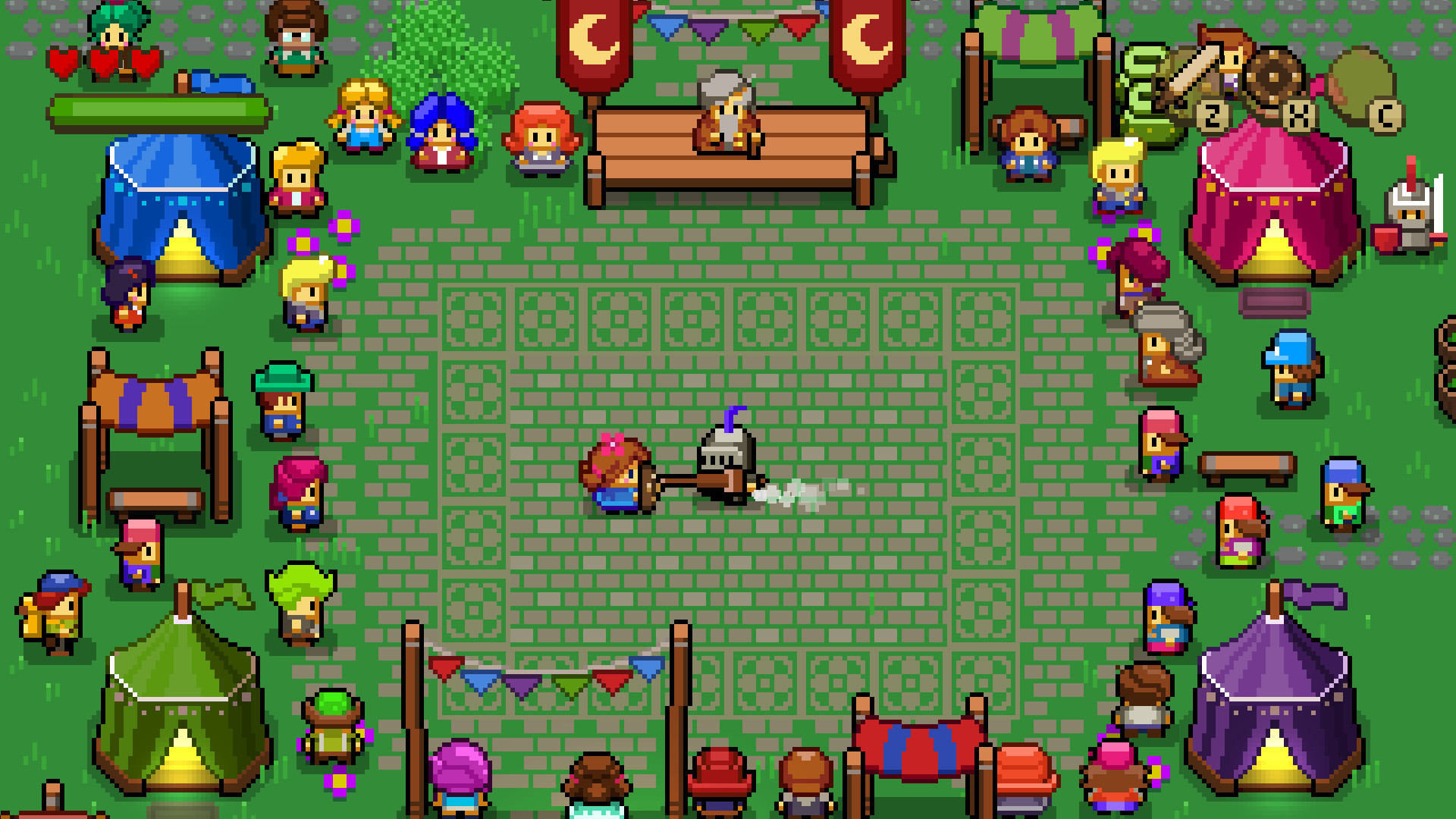
Throughout the festival, and the game, you’re given narrative choices that directly affect the gameplay as the two small children argue with their grandfather over their favourite version of his tales and he has to adjust the story on the fly. We then encounter the big bad that is the Minotaur King himself. Lily’s displeasure with her brother and his antics leads us to a Labyrinth-esque moment (you know – the 1986 film starring the Goblin King himself, David Bowie), where she pleads for her brother to be taken away. The Minotaur King quickly satisfies her request and whisks Chrys off to his dungeon (sans musical number, sadly), and then it’s time for our adventure to begin.
From the first five minute impression, the game had me absolutely hooked. I was loving the improved graphical choices from the first game, which was a little more grainy – everything seems to have been slightly smoothed and made a little brighter here. The musical accompaniment was also absolutely key to the immersive experience. So, I knew my mission, I understood the reasons for it, and the gameplay felt extremely intuitive (or maybe it has been learned from playing a million of these types of games?). It really felt like I could happily escape to this world for the next few hours.
I think here it may be worth mentioning, before we progress further into the meat of this review, that which I alluded to in the opening. Blossom Tales 2: The Minotaur Prince, even more so than the first, really does take its gameplay lead directly from those early Zelda games. There are a lot of references to its inspirations that are very obvious and perhaps even a little bit clumsy. There is one particular NPC who, when I came across them, had me sending photos to my group chat asking “can you believe this?”. Now this, I must stress, is not necessarily a bad thing. But I do feel it’s important to make you aware that there could be some jarring moments of “did they really just do that?” or even “I feel like I’ve seen this before…”. That said, it certainly didn’t impact on my personal enjoyment whatsoever.
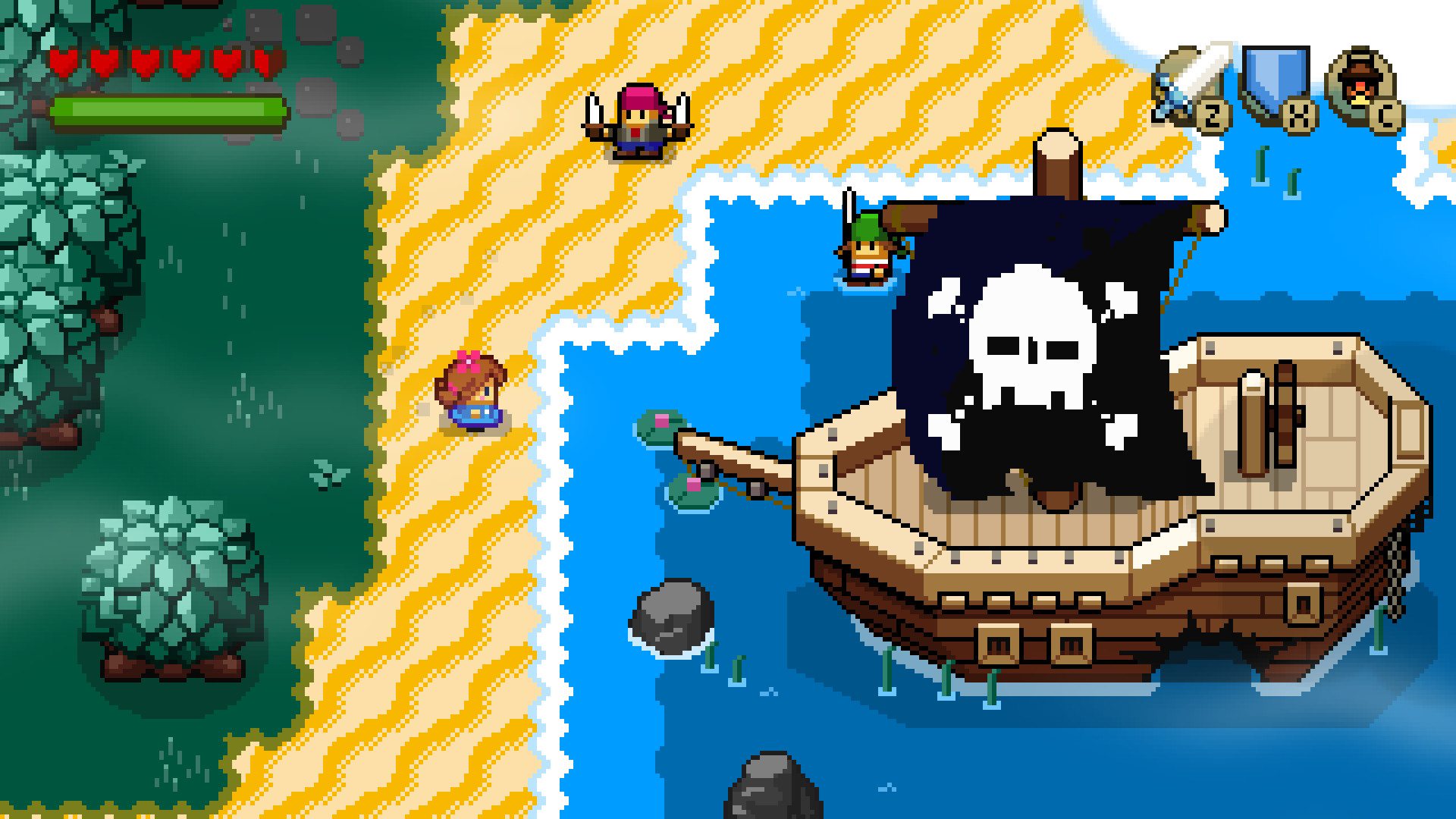
Anyways back to the gameplay, as is standard fare for similar games in the genre, you start out in a quiet little town without so much as a wooden sword or shield to help you on your adventure (it’s ok though, grandma has you covered). As you progress you find yourself obtaining new items which open up new areas of the map for further exploration. As familiar as the gameplay is, I did find myself wandering around for an hour or so wondering where my next step was, not realising one of my new items could interact with a certain obstacle. This one was definitely my bad though, and boy did I feel dumb once I realised my mistake – here’s hoping you don’t make the same one as me! A favourite item of mine was the teleporter, which added an entirely enjoyable fourth dimension to some of your puzzle solving. It requires you to carefully time your movement with that of platforms or traps so you can safely get to where you need to be – it was one of the most innovative items in the game, especially considering the straight imitation of a lot of the other items from Zelda *cough* hookshot yoyo *cough*.
You could tell that developers Castle Pixel LLC really had put a lot of thought into the quality of life or their players as well – a good example being that, unlike other games from the past, there wasn’t a lot of unnecessary backtracking. Players who’ve played Link’s Awakening will likely remember the frustrating nature of the Eagle’s Tower level and the backtracking to find the correct pillars – or a hundred similar experiences in other games. This backtracking wasn’t present in Minotaur Prince; once a puzzle was solved the next steps were always clear and there wasn’t any need to go back halfway across the map to flick the next switch or get the next item. Some of the other pleasant features carried over from the first game, like the games log (to help remember where you were up too or rejog your memory of the quest you are on), and the ability to fast travel were greatly appreciated by this gamer dad. With two kids myself who are just as inquisitive and ready for story-time as the two in-game characters are, I have limited time to enjoy my gameplay. The last thing I want to do is waste it on built-in artificial slow down that old-school games used to have due to memory limitations.
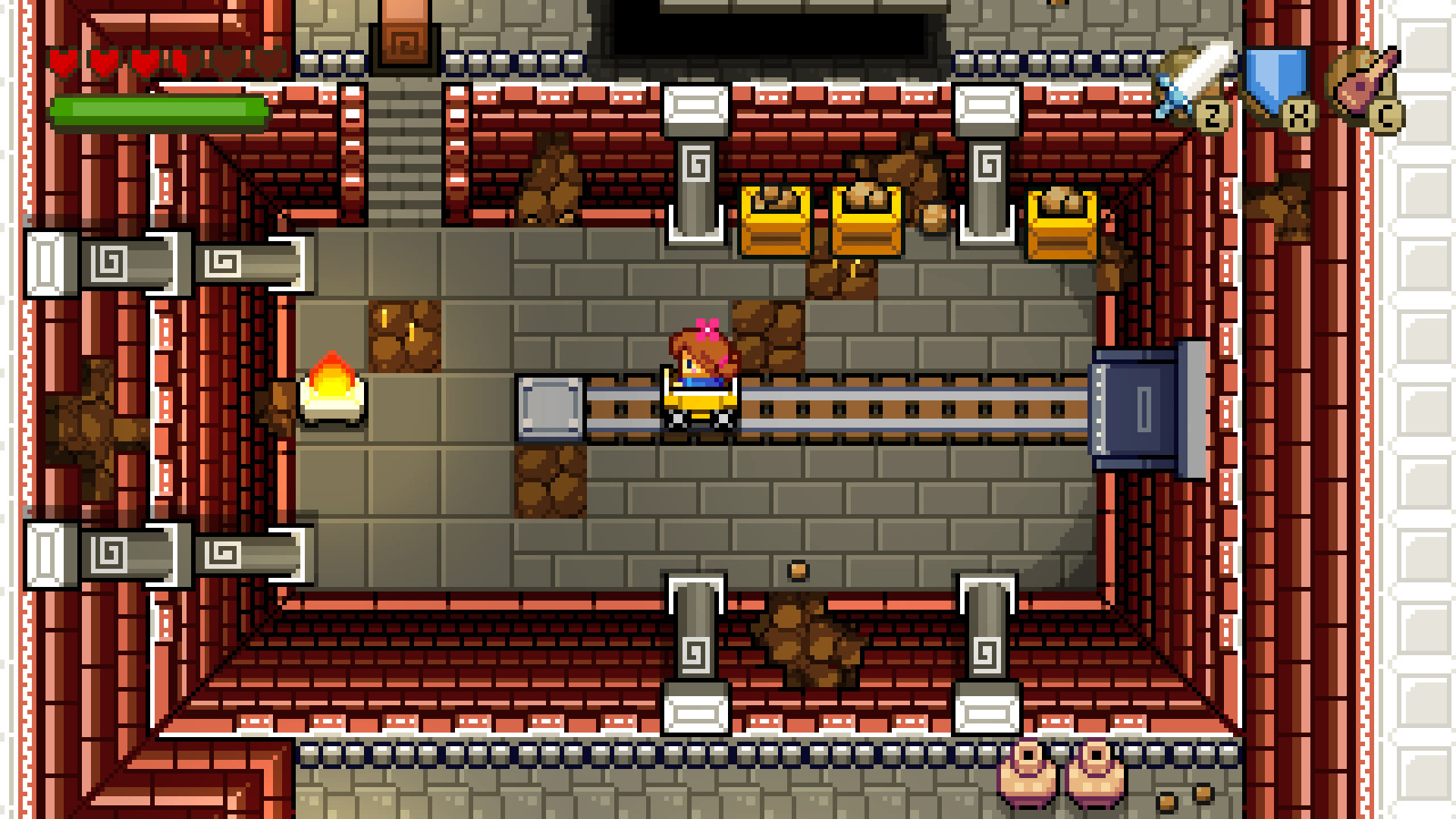
The strength of this game is very much in its charm-driven gameplay. The Minotaur Prince has a lot of exciting side quests and funny interactions that had me smiling throughout. I particularly enjoyed the village of Monsterton; I won’t spoil too much but the music here is beautifully apt and the villagers have some brilliant lines for you to read. There’s plenty for you to find and lots of secrets hidden throughout the world. Make sure you keep your eyes peeled for anything that looks out of place and ensure you always think about how you can use your different items to explore.
As much as I have complemented the game so far there are a few points that I would like to nitpick. One particularly bad mechanic is the lack of an invincibility period after taking damage or falling down a pit. In most similar games once you take damage you will have a brief moment in which to rectify the situation and move out of harm’s way. Not in The Minotaur Prince. Despite having full health, I found myself dying from falling into a pit and being respawned on top of an enemy which would immediately push me back into the pit. This continued until I’d lost all of my health and there was nothing I could do about it, leading to my first death of the game. I like to see how far into a game I can go without dying as a measure of accessibility and this death felt both cheap and totally avoidable if a little more thought was put into the design.
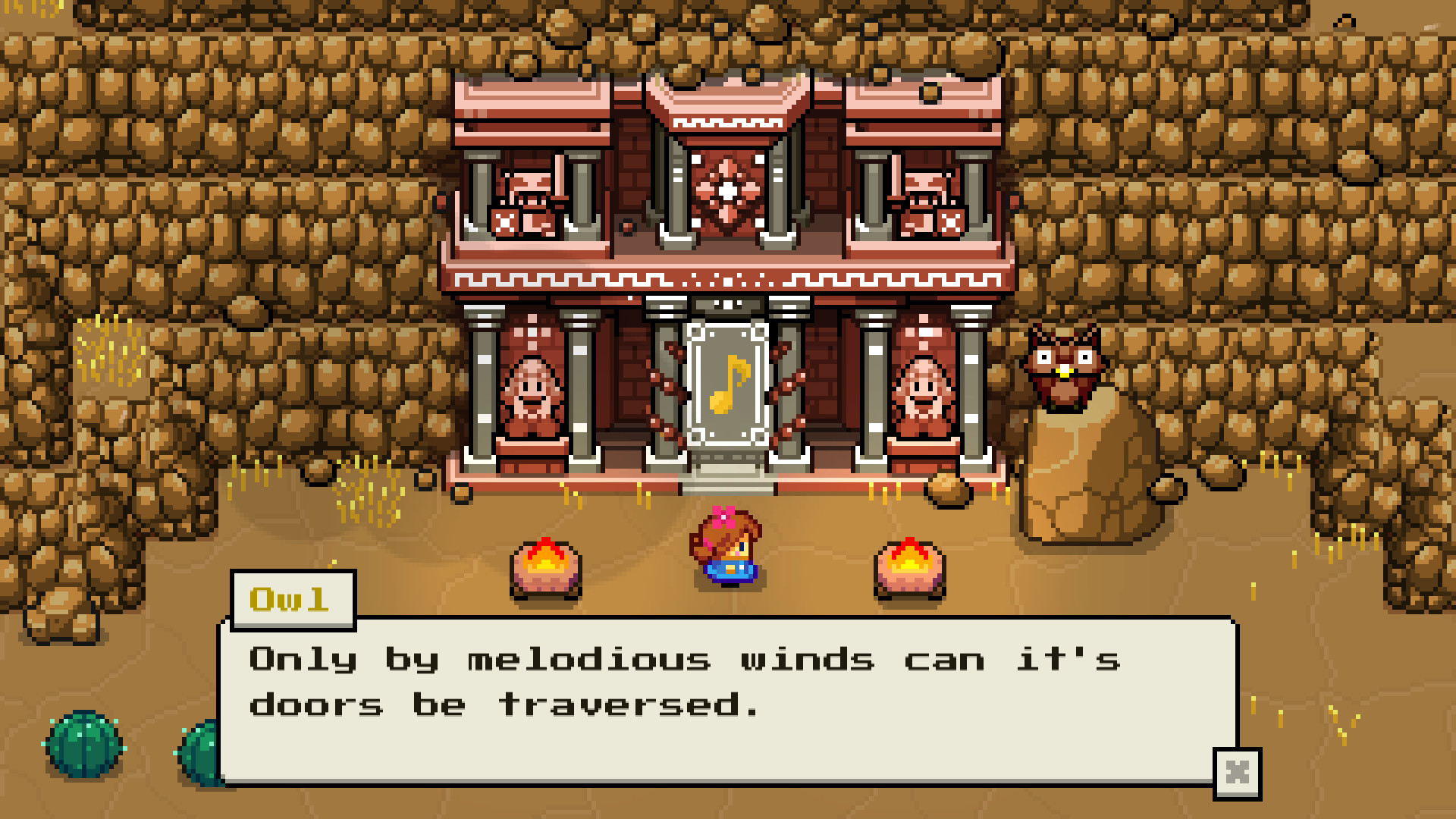
Another issue I had was the mapping of the action button to ‘B’ on the Joy-Con; it’s different from the first game (and most others), and I found myself continually wanting to press ‘A’ to interact with items. This was most jarring when I had the bomb item mapped to ‘A’ and I would proceed to blow myself up instead of having a chat with the nice trader man at the market. Honestly, most of the villagers in this game must’ve thought I was a wannabe pyrotechnician or something with my desire to constantly blow stuff (read: myself) up.
Slight negatives put to one side, I must say that Blossom Tales 2: The Minotaur Prince was an absolute blast from start to finish. I couldn’t put it down as I just wanted to get on to the next dungeon, solve the next set of puzzles and get a new item to open up the next section. I wanted to read the next part of grandpa’s endearing story and his conversation with his delightful grandkids. The only thing that stops me scoring it higher is the obvious copycat nature of a lot of the gameplay. However, I do feel that although Zelda et al have sowed the seeds of this genre in that special place in all our hearts, The Minotaur Prince helps those seeds blossom into more of the same beautiful and enjoyable gameplay that the genre has to offer.
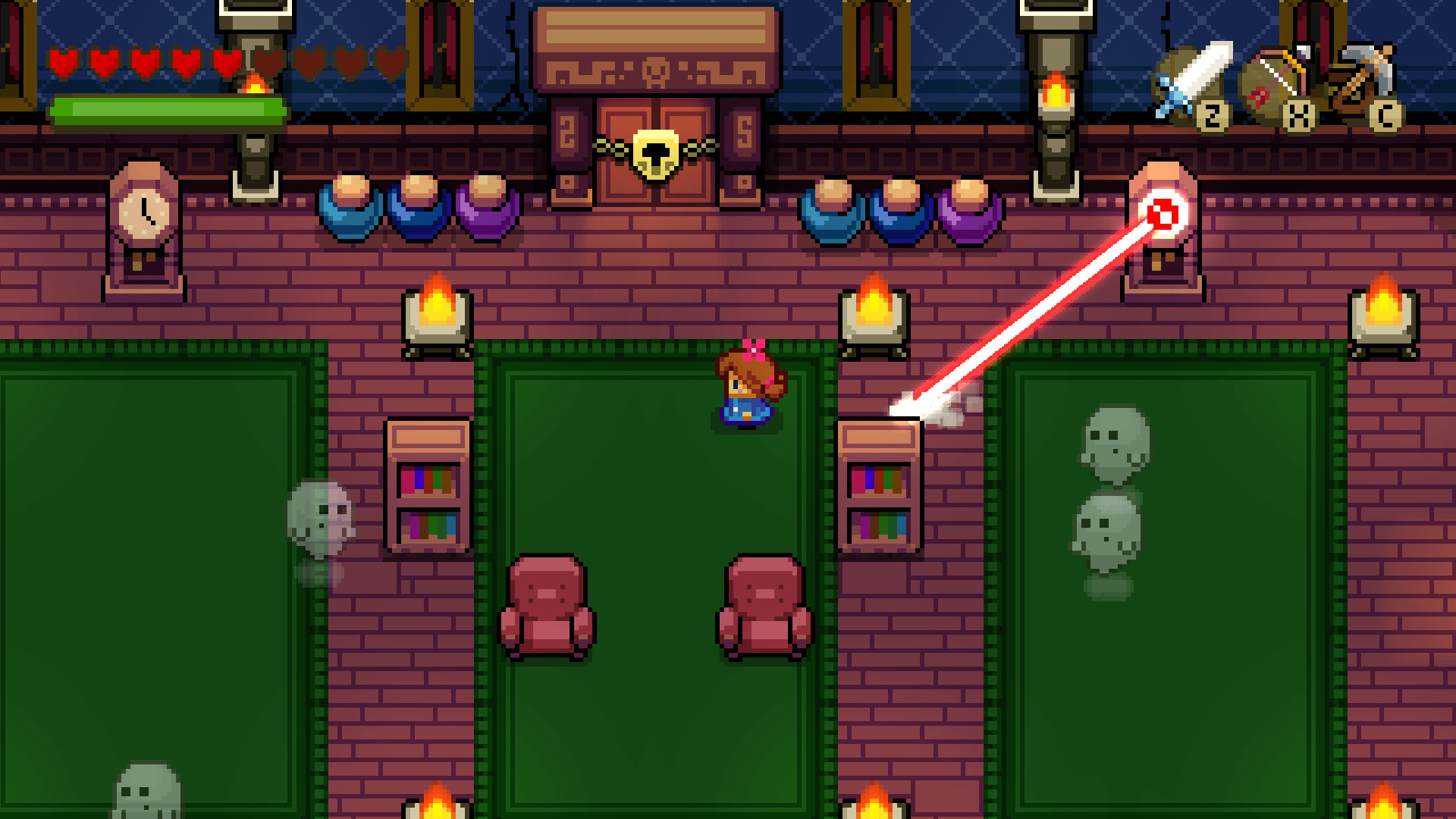
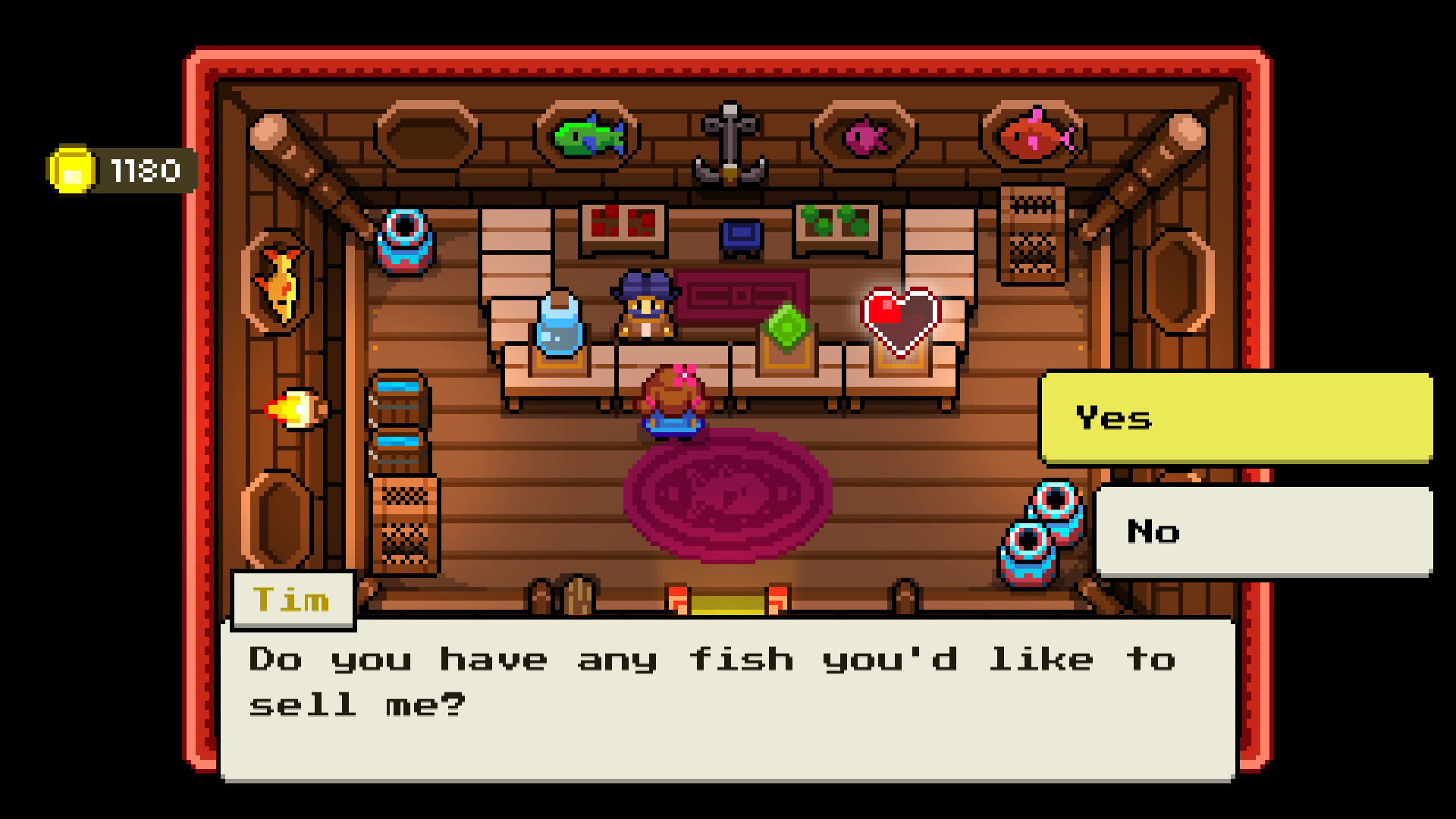
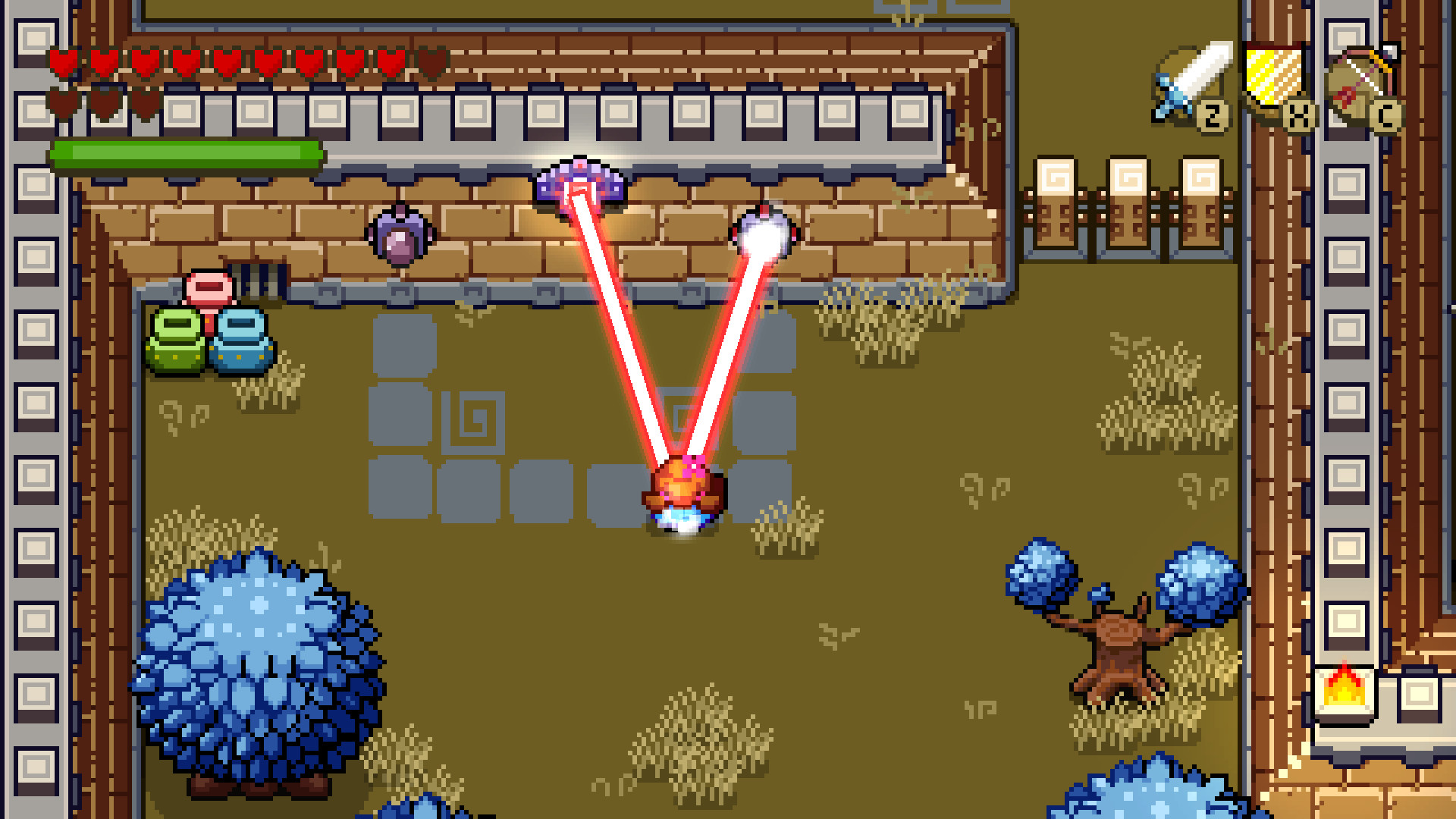
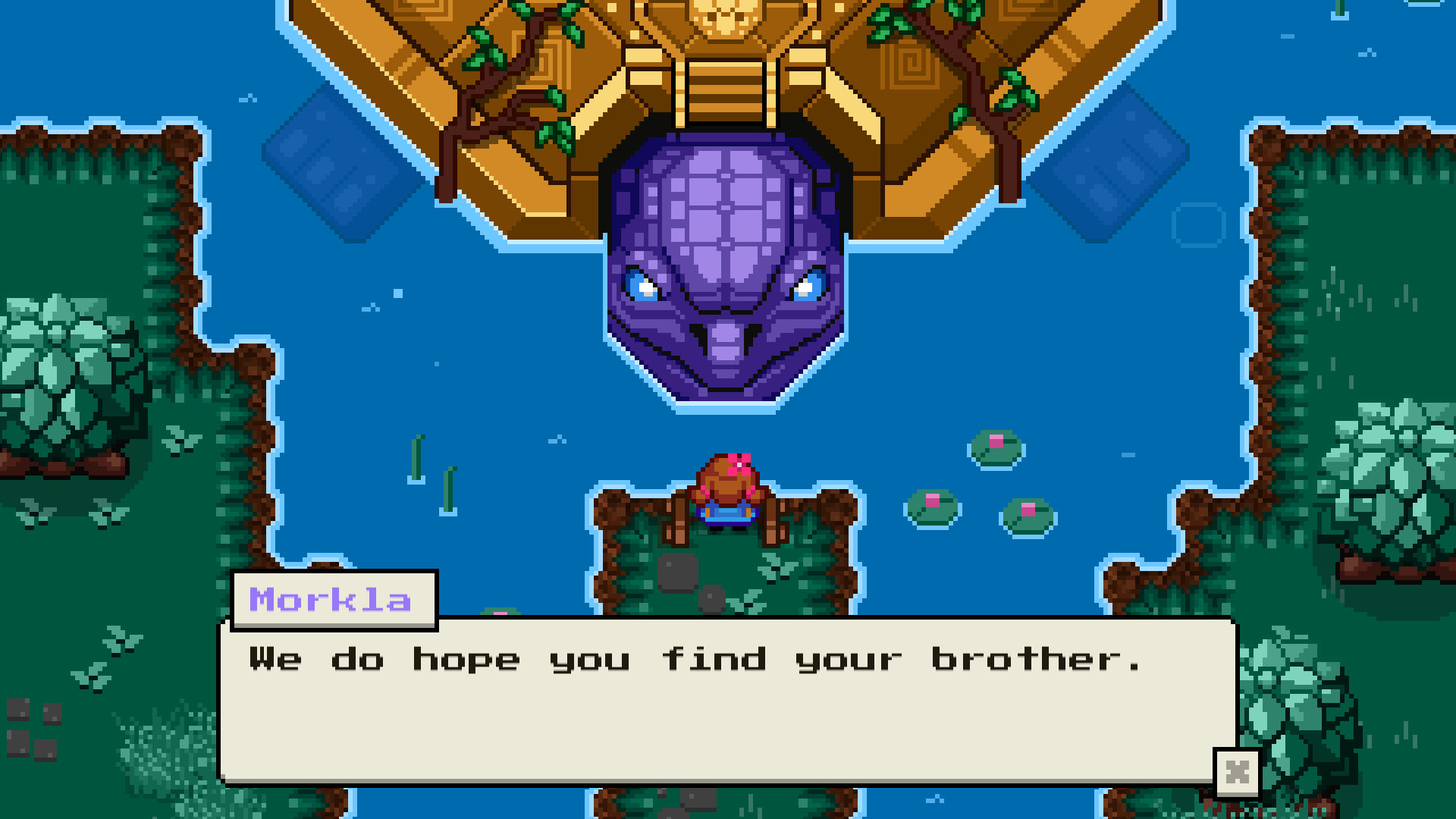
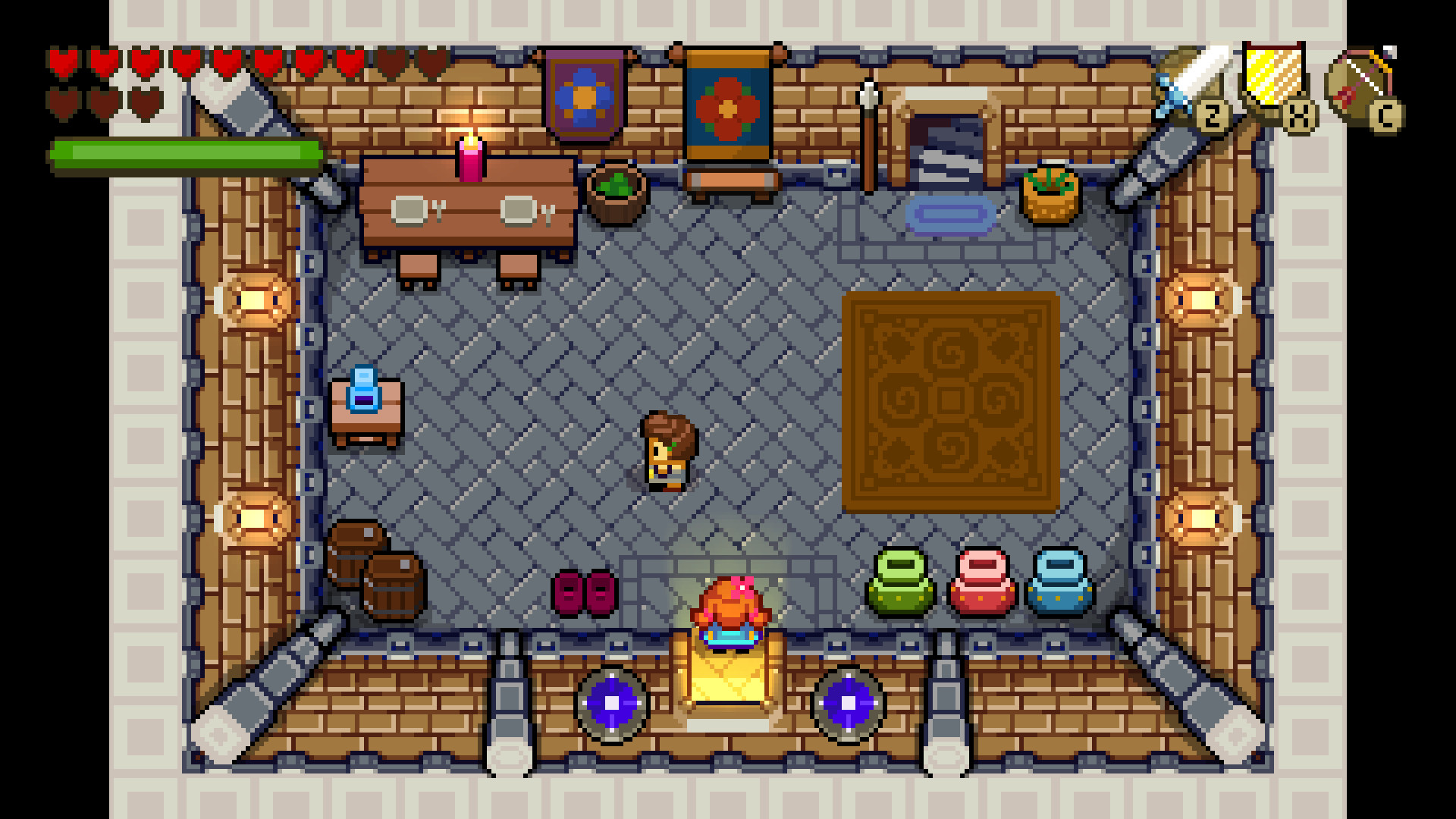
In the interest of full disclosure, VGamingNews was provided with a copy of the game in order to conduct this review.

